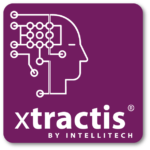XTRACTIS FOR PREcision MEDECINE
Spectrometric Diagnosis of Ovarian Cancer
Benchmark vs. Logistic Regression, Random Forest, Boosted Tree & Neural Network
Design an AI-based decision system that accurately and instantly makes a rational medical diagnosis of ovarian cancer, from a sample of serum analyzed by a mass spectrometer.
Identify the proteins involved in cancer, from the spectrum bands.
Enhance medical knowledge by helping gynecologists and oncologists understand the causal relationships between specific proteins, their combination, and the presence of cancer.
Help the medical profession to make earlier and more personalized decisions through rapid, systematic, and explainable diagnoses.
Contribute to improving patient care (pain, survival, duration of treatment) and extend access to high-level diagnoses even in medical deserts.
- The top-model is a decision system composed of 2 disjunctive gradual rules without chaining. Remark: Even if the theoretical complexity of this problem was very high, the decision process studied turns out to be quite simple, although non-linear.
- Each rule uses from 1 to 3 predictors among the 3 variables that XTRACTIS automatically identified as significant (out of the 15,154 mass/charge parameters describing each patient).
- Rules are not necessarily triggered at the same time to compute the decision.
It has a perfect Real Performance (on unknown data).
It computes real-time predictions up to 70,000 decisions/second, offline or online (API).

LoR=Logistic Regression
RFo=Random Forest
BT=Boosted Tree
NN=Neural Network
Detailed results and explanations in full document
Use Case 2024/03 (v2.0)
Powered by XTRACTIS® REVEAL v12.1.42004 (2022/06)
CONTENTS
- Problem Definition
- XTRACTIS-induced Decision System
- XTRACTIS Process
- Top-Model Induction
- Explained Predictions for 2 unkown cases
- Top-Models Benchmark
- Appendices




